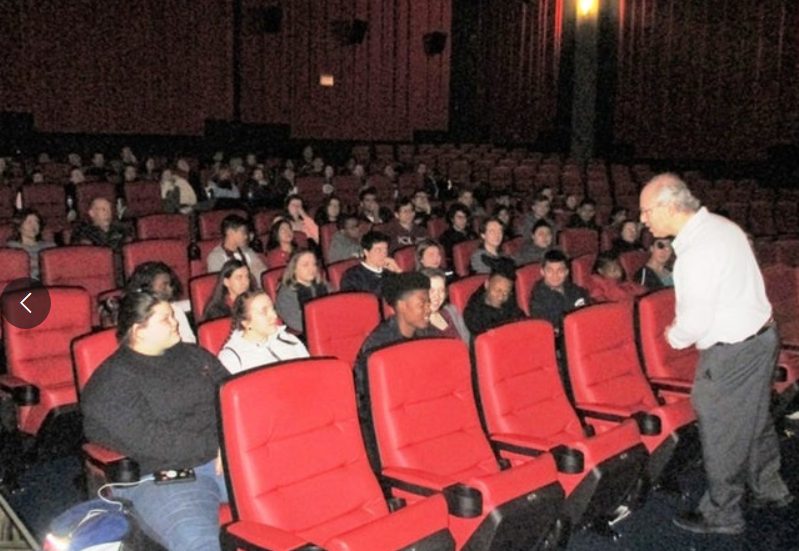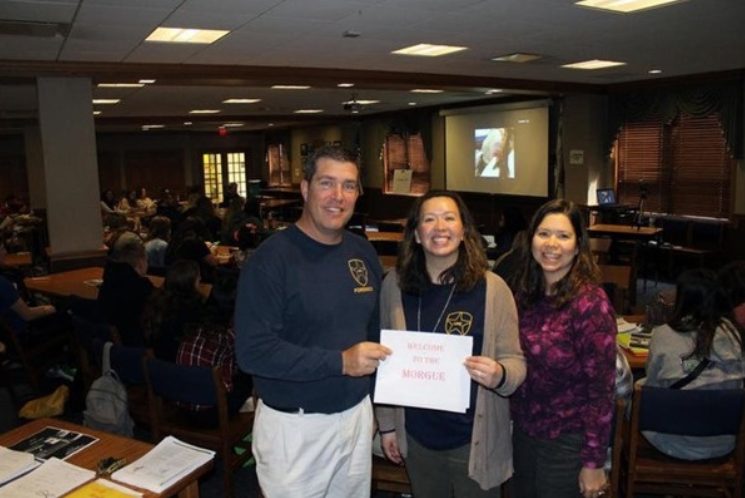High Schools:
In-school field trip.
$300 one-time payment
Ordering details
You can start your event anytime. You do not need to start your event at the time of purchase. After payment is received, we will send you a coupon code in your payment confirmation email. You may use your coupon code to activate your field trip any time at your convenience. Your payment confirmation email will also include instructions on how to access the site and your event materials.
Two introductory cases – plus full site access included
–Case 1 (focus on chest and abdomen; 29:05 minutes of video).
–Case 16 (focus on brain removal; 11:54 minutes of video).
–Hundreds of additional videos plus activities depending on your goals and time.
–Cases divided into short, accessible parts for easy, structured teaching format.
–Basic autopsy explanation within audio.
–Anatomy guides with pins highlighting video structures.
Two workbooks included:
–General Workbook (Student Edition/Teacher Edition) with 3 days of pre-activities and 1 day of post-activities. (Download PDF)
–Guided Questions Workbooks with questions to follow while viewing the cases. (Download PDF)
Two-day access to video content:
–Start access whenever you wish.
Parent/Guardian-Student Consent
–Provided as word doc. (Download)
–Edit/update to tailor for your school as you wish.
Tech Details
–Access by educator login for self-guided event.
–1-screen educator access for shared in-class experience.
–No special hardware required. (If you can access a YouTube video, you can access this site.)
Contact us to learn about extended access options for high schools.
Extended access options
Think “dual credit” but at the medical school level.
Please Contact us to learn more.
Easy integration
Utilize the short-video format for curriculum “recipes” that fit easily with your current lesson plans. A 5-minute class-starter showing the actual heart will energize your cardiovascular lesson. Student assignments can function like hands-on organ labs or focus on specific areas of the body.
Make difficult concepts intuitive
3-d concepts like cavities, body layers, and organ relationships become accessible through engaging videos as structures are turned, lifted and dissected in the videos. Physiology comes to life. The cases show more than anatomy. They show how the body functioned during life. For example, viewing fluid in the lungs teaches first hand how heart failure backs up through the pulmonary circulation. And so on.
Motivating
The cases are real at a time when students crave relevant, real, fascinating content. The patient stories and view of life and death allows students to reflect on their own lives ahead and the impact of health choices; and know the importance of the material you are teaching.
Graduated responsibility
We recommend parental consent and integration of mature discussions with students. The conversation you’d have with your students before visiting a medical school anatomy lab is the same you’d have here. There issues are adult, from disease to trauma to substance abuse. There is nudity and decomposition. But there is always respect for the deceased. Help your students to grow into the complex world with graduated use of the site. Or jump in if your students are ready, for example, in career-track programs where students are already working in hospitals.
Distance learning labs
The options are endless. Have students follow one case over the year — like medical school anatomy lab — revisiting the body as new organ systems are covered in class. Assign groups different case and have each present the findings, like a pathologist. Utilize the broad database to have students research topics. Engage with our interactive group features. And more….We can assist with curriculum planning.
What people say about our high school event:
-Kelley Pataky, Science Teacher, Arlington Heights
-Chad Robson, Science Teacher, Tinley Park
–Nina P, student
-Jamie B., student
-Jiaqi C., student

View press
Tinley Park High School

View press
Lincoln Way East High School
